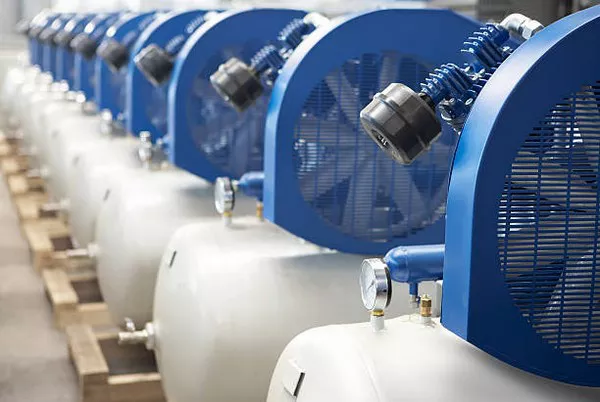Air compressors are invaluable tools in various industries, serving a multitude of applications from powering pneumatic tools to providing a reliable source of compressed air for manufacturing processes. One common classification of air compressors is based on the number of stages they operate in, with the two-stage air compressor being a popular choice for many demanding tasks. In this article, we will delve into the workings and advantages of a two-stage air compressor, shedding light on how it differs from single-stage counterparts and why it is often the preferred choice for specific applications.
What is a Two-Stage Air Compressor?
A two-stage air compressor is a type of air compressor that compresses air in two distinct stages, as opposed to a single-stage compressor that compresses air in a single step. In simple terms, it takes in ambient air and gradually increases its pressure through a two-step process, producing compressed air that is suitable for a wide range of applications.
How Does a Two-Stage Air Compressor Work?
To understand the inner workings of a two-stage air compressor, we need to break down the compression process into two distinct stages:
First Stage:
The first stage of compression begins when ambient air is drawn into the compressor through an intake filter.
A powerful piston or rotor compresses the air, increasing its pressure significantly.
At this point, the air temperature also rises due to the adiabatic heating effect.
Second Stage:
The high-pressure air from the first stage is then directed to the second stage, where another compression process occurs.
In the second stage, the air is further compressed, leading to a significant increase in pressure.
The air temperature rises again during this stage.
The main difference between a two-stage compressor and a single-stage compressor is that a single-stage compressor would compress the air only once, whereas a two-stage compressor goes through two separate compression stages. This results in several advantages for two-stage compressors.
Advantages of Two-Stage Air Compressors
Improved Efficiency: Two-stage air compressors are more efficient than their single-stage counterparts. By compressing air in two stages, they can achieve higher compression ratios while minimizing the temperature rise during each stage. This increased efficiency means less energy is required to generate a given volume of compressed air.
Higher Pressure: Two-stage compressors can achieve higher pressures than single-stage compressors. This makes them ideal for applications that require a higher output pressure, such as heavy-duty pneumatic tools or industrial processes that demand substantial air pressure.
Enhanced Cooling: Two-stage compressors experience less heat buildup due to the intercooling between the two compression stages. This means the compressed air is cooler and less likely to cause damage to downstream equipment, such as air-powered tools or industrial machinery.
Greater Air Output: Thanks to the two-stage compression process, two-stage air compressors provide a more consistent and higher volume of compressed air. This is essential for applications where a steady supply of compressed air is necessary.
Extended Lifespan: The reduced heat generated in two-stage compressors results in less wear and tear on the components. As a result, these compressors tend to have a longer lifespan and require less maintenance over time.
Versatile Applications: Two-stage air compressors are versatile and can handle a wide variety of applications, from automotive repair shops and construction sites to manufacturing facilities. Their ability to deliver both high pressure and volume makes them suitable for a broad range of tasks.
Improved Durability: Two-stage compressors are built to withstand heavy-duty applications. They are designed with robust components and materials, making them more durable and reliable, especially in demanding industrial environments.
Common Applications of Two-Stage Air Compressors
Two-stage air compressors find applications in numerous industries due to their superior performance and capabilities. Some common areas where they are extensively used include:
Automotive Workshops: Two-stage compressors are ideal for powering pneumatic tools, such as impact wrenches, air ratchets, and paint sprayers, commonly found in automotive repair and body shops.
Manufacturing and Industrial Processes: Industries requiring high-pressure air for various processes, such as CNC machining, metal fabrication, and packaging, often rely on two-stage air compressors for their consistent air supply.
Construction Sites: Construction activities often involve the use of pneumatic tools and equipment, such as jackhammers and nail guns, where the high-pressure output of two-stage compressors is beneficial.
Woodworking Shops: Woodworking shops make use of compressed air for tasks like sanding, shaping, and painting, making two-stage compressors a valuable asset.
Petrochemical and Oil Refineries: In hazardous environments where high-pressure air is needed for safety and industrial operations, two-stage compressors are essential.
Conclusion
Two-stage air compressors are a pivotal tool in various industries, providing a reliable source of high-pressure compressed air. Their unique two-stage compression process offers several advantages, including improved efficiency, higher pressure output, enhanced cooling, and versatility. These compressors are essential for a wide range of applications, from automotive repair and construction to manufacturing and heavy industry. By understanding the benefits and functionality of two-stage air compressors, businesses and professionals can make informed decisions about their air compression needs, ultimately improving productivity and reducing energy consumption.

